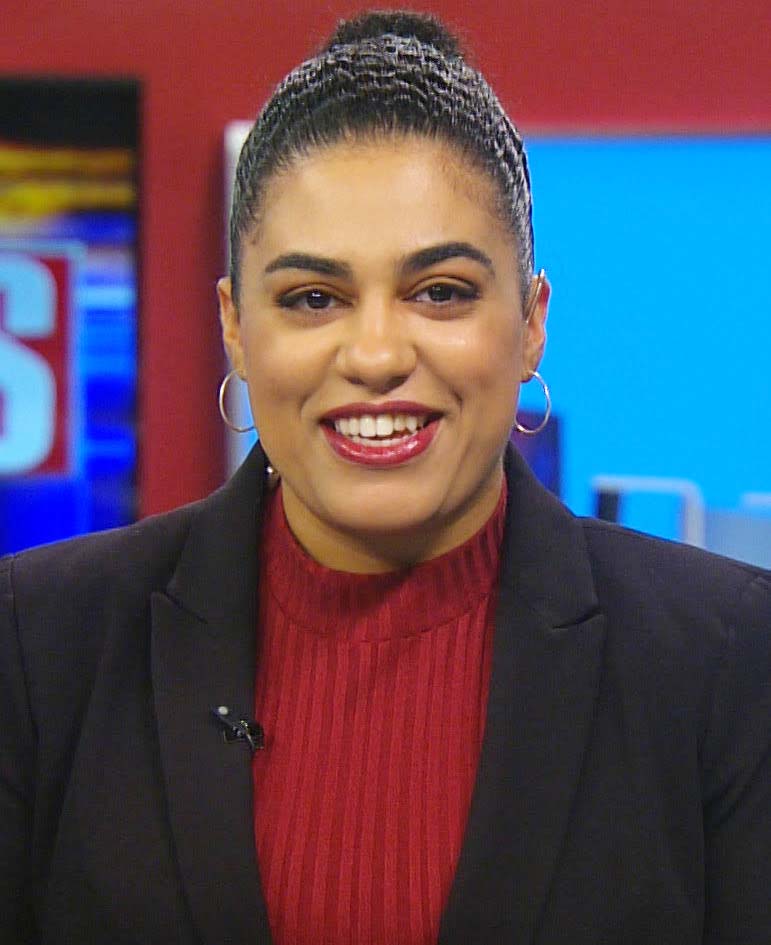Newhouse alumni help shape the space between social media and journalism
Diana Riojas ’21 wants to make an impact.
She wants New Yorkers to know why their electricity bill has skyrocketed, and what they can do about it.
She wants to answer people’s questions about local elections and warn them when natural disasters are coming.

When she talks about the work she does at the New York City newspaper The City, she doesn’t talk about scheduling tweets or creating graphics for Instagram. She talks about all the concrete ways her job helps people.
Riojas is one of several Newhouse alumni who are contributing to the expansion of journalism on social media. According to a 2021 Pew Research Center Survey, almost half of Americans get their news from social media. Many journalism outlets are adapting and creating social media strategies to best serve their audience, even as the platforms and technology are constantly shifting.
Before becoming a social media associate for The City, Riojas was an in the second cohort of Instagram’s Local News Fellowship Program during the summer following her junior year. As part of the program, she built an Instagram presence and strategy for 100 Days in Appalachia.
In her time there, she says, she saw the power of social media to break down and explain complicated topics to a wide audience. One example is the Instagram Live she put together in the wake of the Jan. 6 attack on the Capitol. Chris Jones, a reporter for 100 Days in Appalachia who specializes in domestic extremism, was in the building during the raid; Riojas quickly set up Instagram Live so Jones could explain and breakdown the events of the day and answer viewer questions.
“I love that kind of work. [We got to] answer audience questions and really debunk a lot of misinformation about what happened that day,” Riojas says. “That’s when I really got to see the kind of impact social media can have on our readers.”
After she finished working with 100 Days in Appalachia, Riojas knew she wanted to continue working in social media for journalism outlets. After she graduated with a degree in magazine, news and digital journalism (MND), she began interning at The City, where she was eventually hired as a social media associate. She loves how hyperlocal the paper is, and also loves her role in using social media to reach beyond the typical audience.
“Social media has a real role in broadening a newsroom’s reach. For one thing, not everybody who needs information—especially vital information when it comes to an election or emergency—will go on The City’s website to read the article.” But, she says, they can find the information via Instagram or Twitter.
Building relationships

Carmella Boykin ’21 is an associate TikTok producer at The Washington Post. She says that beyond thinking about the best way to convey the news in a clear and entertaining way, she is also thinking about the larger goals of her work at the newspaper.
“I think the benefit of social media is having something that hooks your attention and then you see who’s posting it and go to that platform,” Boykin says. “Being able to convert a lot of TikTok viewers to subscribers is a really big goal we have.”
Both Boykin and Riojas express a sense of responsibility when representing journalism outlets on social media.
“You can really build a relationship with your readers when they know there’s someone on the other side of that social media account who is reading their comments and taking their questions and relaying that to the reporters or editors,” Riojas says. “[The audience knows] there’s someone in their corner. Essentially, you’re building up a bigger trust with your readers.”
MND professor of practice Jon Glass agrees that having a social media presence helps humanize media outlets and build a deeper relationship with the audience. However, he says social media plays a deeper role in journalism.
“When social media came onto the scene in the past decade, people tried to figure out how to leverage the platform for getting out their message, doing their work, connecting with others, and so it still remains a very useful tool for journalists and journalism overall,” Glass says.
Glass wants to make sure that Newhouse continues to equip students with the tools they need to become successful journalists, and part of that includes teaching students how to extend their content into social media.
“We want all our Newhouse students to graduate as great storytellers in their respective realms, and the fact that [social media is] so accessible and so readily used is a key component to how our students learn and get better at being professional communicators,” he says.
Both Riojas and Boykin say their time at student media organizations and in the classroom helped them develop the skills to work in social media.
“In my journalism writing classes and my capstone class, social media wasn’t ever an afterthought. When I was writing an article, social media was one of the first things we also talked about,” Riojas says. “I think that’s also the reason why I got the Instagram fellowship, because I was already being trained that to think that way.”
Elizabeth Kauma is a senior in the magazine, news and digital journalism program at the Newhouse School.